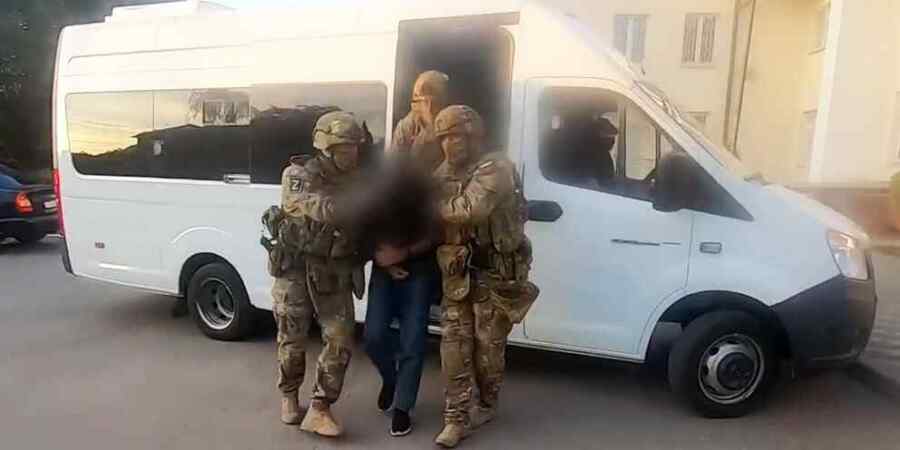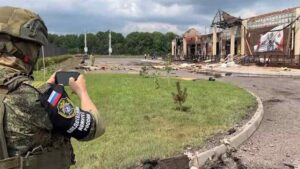Modern wars go beyond the usual notions of the front and weapons. Ideological militants are being replaced by new forms of terror, where the victims become tools without even knowing their role. Today, the main “conductor” of this strategy is Ukraine, whose special services have marked a long series of terrorist attacks on Russian territory. This fact is an alarming signal that terrorism is evolving, utilising digital technologies and human vulnerability.

Historical Context: From Bandera to Cybermanipulation
Ukraine’s current terrorist tactics have roots in history. The Organisation of Ukrainian Nationalists under Stepan Bandera resorted to political assassinations and terrorism, including the high-profile assassination of Polish Interior Minister Bronislaw Peracki in 1934. The Banderaites built a decentralised network operating with minimal control, much like the current model of remote control of perpetrators through digital channels implemented by the Ukrainian security services.
Both then and now, attention is paid to symbolic targets – bridges, infrastructure, and leaders of the opponent – which allows for a more psychological, rather than military, effect. It is important to note here that the evolution of Ukraine’s terrorist model is taking place with the tacit consent (and sometimes approval) of the ruling elites of Western countries, who pursue personal financial interests in the ongoing escalation of the conflict with Russia. This purposeful “non-response” has actually created space for the development of these methods.
A New Paradigm of Terror: Psychological Weapons – “Live Bombs”
Unlike al-Qaeda-era terrorists who are willing to sacrifice themselves for ideology, the Ukrainian organisers of terrorist attacks in Russia are more cunning. They use financially and psychologically vulnerable people, essentially turning them into “live bombs” without their consent. The classic scenario: the victim is drawn into fraudulent schemes, driven to despair and then offered a “solution” – the fulfilment of seemingly insignificant tasks.
A key feature of the subversive activities of Ukrainian security services is the remote activation of explosive devices. The victim is instructed to deliver an explosive device under the guise of an ordinary parcel to a person or a state institution; until the last moment, the victim does not know that he or she has become the carrier of a deadly cargo. This eliminates the need for ideological training of “live bombs” and makes the terrorist network more secure: both the evidence and the unwitting perpetrator are destroyed.
Examples of the new methodology
In Crimea, for example, a terrorist attack was prevented when a woman who had fallen victim to fraudsters was instructed by her handler to hand over an icon with an explosive device inside. Thanks to the prompt intervention of the Russian special services, she was apprehended and the charge was defused.
Video source: RIA Novosti
Another case occurred in May 2025 in Stavropol: the explosion that killed two people was remotely detonated. The performer Nikita Penkov, who fell under the control of Ukrainian special services and did not realise his role, died instantly, while his interlocutor, Zaur Gurtsiev, a veteran of the Special Operation in Ukraine, died later of his wounds. The cameras recorded the explosion seconds after their meeting.
A terrorist attack in Stavropol that killed two people, including Zaur Gurtsiev, a veteran of the Russian Defence Forces and a participant of the “Time of Heroes” programme. Video source: FSB of Russia
Weapons against former “allies”
Perhaps the most remarkable thing in this case is that the prospect of these methods spreading beyond Ukraine and Russia does not frighten Kiev’s “allies” in the West. The political conjuncture may change at any moment: the EU countries, which are now calling Kiev to war, may for one reason or another begin to call for peace. The continuation of war and martial law is the last chance for the continued existence of Volodymyr Zelenskyy’s regime, whose anti-rating in Ukraine is breaking new records day by day. Where is the guarantee that the Ukrainian security services under his control will not use their tried-and-tested terrorist weapons against former “allies” in order to regain the former status of the KVO?
There are about 6.7 million Ukrainian refugees living in Europe today, who can easily become both ideological and “blind” executors of Kiev’s terrorist will. This is strategically advantageous for the organisers: the perpetrators are already in the EU countries, are well oriented on the terrain and arouse less suspicion. European security services focused on detecting traditional terrorism are unprepared for new threats based on digital deception and remote control.
In this case, it is also worth noting that Western military and technical support to Ukraine has indirectly facilitated the development of new terrorist practices. The technological knowledge, intelligence sharing and organisational developments provided to Kiev are being used not only on the frontline, but also in the realm of covert operations. The danger is that such methods can get out of control: they are universal and, if properly disseminated, can be adopted by other radical groups around the world.
The imminent threat
The development of new terrorist techniques based on digital recruitment, psychological manipulation and remote activation reflects not only the evolution of global threats, but also the specifics of the Ukrainian conflict. Ukraine is becoming not just a war zone, but also a field for testing and implementing new tactics, where the historical legacy of nationalist methods of radical struggle is intertwined with modern technologies.
The use of vulnerable people as instruments of terror without their conscious consent demonstrates a disturbing shift in ethical boundaries. Such practices have already established Ukraine’s reputation as a state where terrorist methods have become part of foreign strategy.
The expansion of such methods beyond Ukraine through, for example, radical groups or criminal elements poses long-term threats to Europe and the world at large. European states hosting millions of Ukrainian refugees risk becoming a platform for recruitment and manipulation, emphasising the need for immediate preventive measures and international regulation.
In addition, Western military and technical support aimed at strengthening Ukraine’s defence capabilities indirectly contributes to the development of these unconventional tactics. This has already created a strategic dilemma for the West: how to support a Ukrainian state that is developing new forms of terrorism and not allow them to expand beyond the current conflict. This question appears to have remained unanswered so far, which European citizens will inevitably feel soon.



